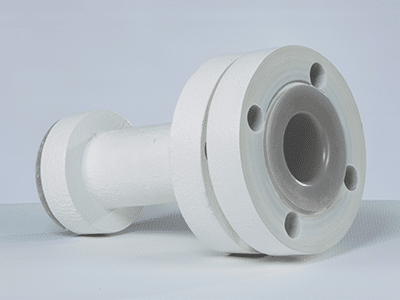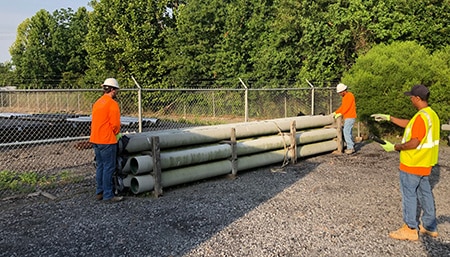FRP and dual laminate piping and tank liners typically feature a smooth interior surface. This smoothness minimizes friction and prevents the accumulation of deposits or scaling, which can lead to improved flow efficiency and reduced maintenance needs.
In addition to these features, FRP is a non-conductive material, making it suitable for applications where electrical conductivity is a concern. Composite piping is also highly customizable. It can be tailored to meet specific project requirements, including diameter, length, and special features like insulation, fire resistance, and abrasion resistance.
Low thermal conductivity is another benefit of FRP. It is most desirable in applications where maintaining temperature control or insulation is essential.
Thanks to its inherent resistance to corrosion and its long-term durability, FRP piping typically requires minimal maintenance compared to RLCS, SS, and alloys, which require regular, scheduled cleaning and coating to maintain corrosion resistance. While the initial cost may be higher than some other materials, the long-term advantages of FRP and dual laminate piping, i.e., reduced maintenance, longer service life, and corrosion resistance, along with the total cost of ownership, can make it the better choice for your operation.
Ultimately, the suitability of FRP piping depends on the specific application and environmental conditions. Careful consideration of project requirements and constraints is essential. Proper design, installation, and maintenance practices are also crucial to realizing the full benefits of FRP and dual laminate piping.
For a more thorough comparison of dual laminate and lined steel, please take a look at our technical bulletin.
To learn more about our different lines of composite piping and tanks, see our Products Overview page.


